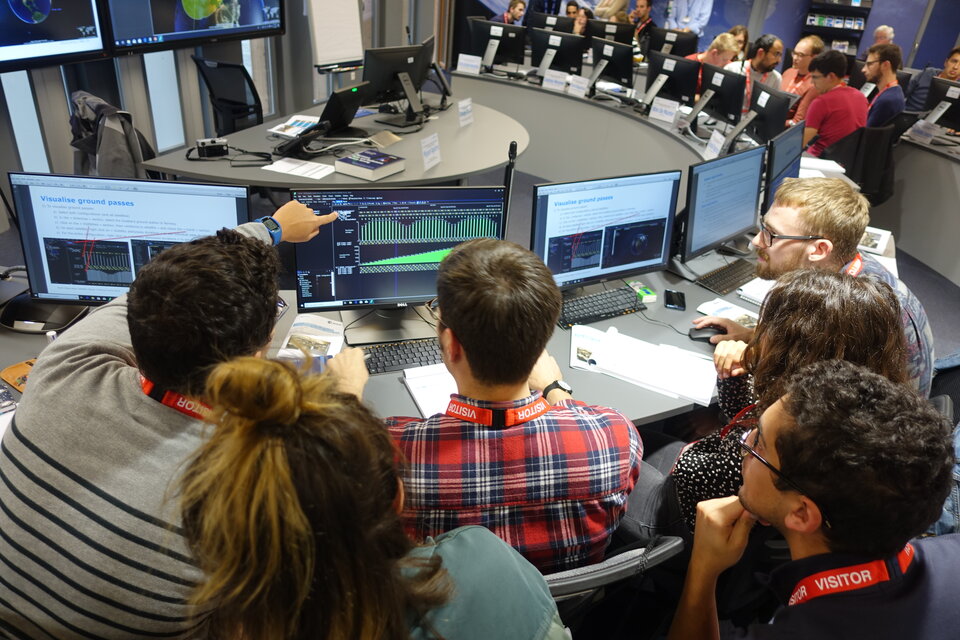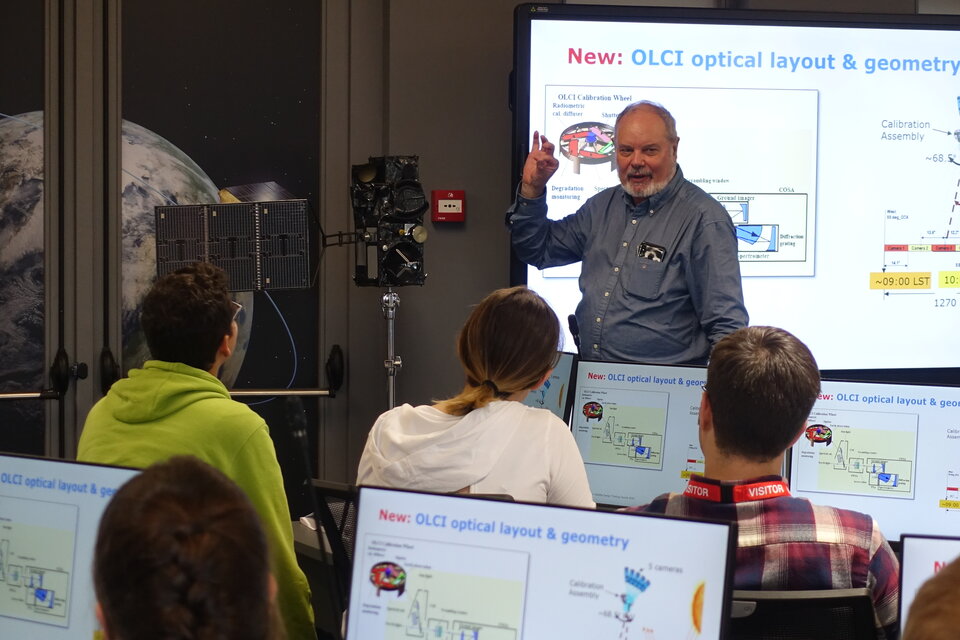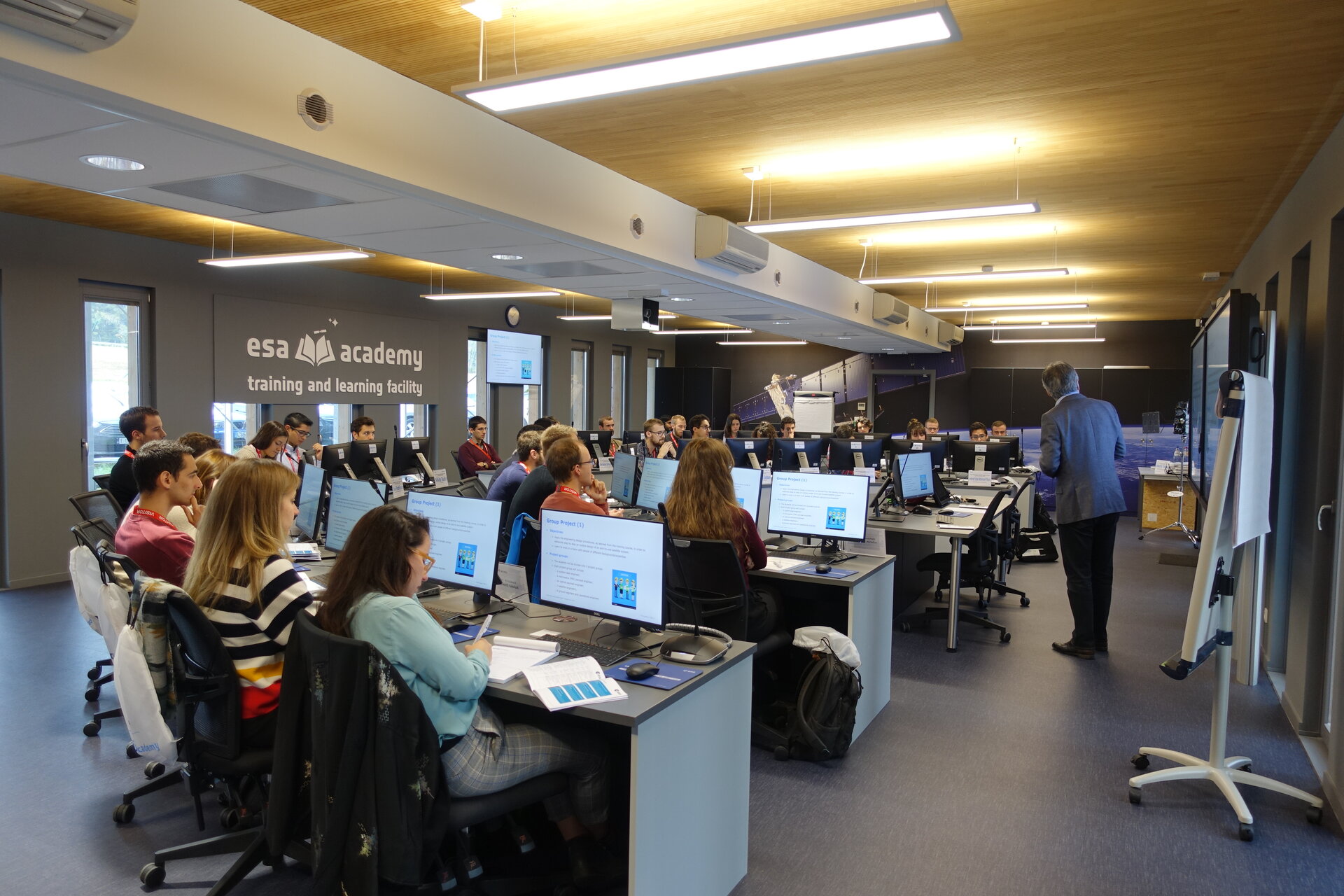University students complete first ever ESA Academy’s Earth Observation Satellite System Design Training Course
30 university students from 12 different ESA Member and Associate States have successfully completed ESA Academy’s Earth Observation Satellite System Design Training Course 2018. Held from 1 to 5 October 2018, this pilot edition of the course was held at ESA Academy’s Training and Learning Facility, ESEC-Galaxia, Belgium. The students had engineering and physics backgrounds, and were keen to study the design of Earth Observation (EO) satellite systems.
Running the course were active ESA staff and retirees with lifetimes of experience. As the ARES co-organiser explained, “For the large majority of the trainers the preparation and delivery of this course was a real challenge but the course turned out to be a success, thanks also to the high enthusiasm and positive attitude of the students and trainers. There was good chemistry among the students and trainers leading to an enjoyable experience for all of us. We are looking forward to making it happen again.”
The first day began with an introduction to EO satellites and programmes at European and international level. The students were taught the importance of starting with observation requirements, and from that then deriving system requirements. An overview was given of the main EO satellite orbits and launchers, followed by a practical exercise using the SaVoir software tool. As a bonus, the group had the opportunity to visit ESEC-Redu and the PROBA control room!

Day two kicked-off with a lively discussion about risk management and technology development for EO missions. The students then enjoyed several lectures about microwave instrumentation, starting with background theory, then progressing to how microwave payloads allow for useful Earth remote sensing. Next, the participants were challenged with an exercise to size a radar instrument for a case study mission. "The lectures of the experts were the most interesting I have ever heard, especially through their own experiences shared with us,” enthused a German student from the Technical University of Braunschweig. “We were taught a broad and yet very detailed knowledge of Earth observation satellites, which we were able to further deepen in various group work.”
The third day was dedicated to optical instrumentation. After three lectures, the students were tasked with an exercise to size an optical instrument. Day four saw the students learn the basics of satellite design and payload integration, as well as ground segment and operations concepts. The students discovered how EO satellites are prepared for assembly, integration and verification (AIV) activities, in addition to launch and in-orbit verification. They also investigated the large number of applications EO satellites have in terms of remote sensing.
Part of the last 3 days was also ring-fenced for a group project: working on a case-study for a future EO mission. Each student was put in charge of an engineering field, including system engineering lead; microwave instrument sizing; optical instrument sizing; satellite design and ground segment & operations concepts. The challenge was to collaborate and devise a simple, yet complete, EO mission design. The final day was dedicated to finishing this group project, and then presenting the outcome of their work to the ESA experts.

All the students worked very hard – even late into their evenings – on the group project. The trainers were particularly impressed by the quality and originality of the designs. In the short time allocated, the students were able to grasp the main concepts, as well as appreciate the complexity underlying EO mission design.
Upon completion of the course, the student teams were evaluated on the presentation of their mission design. They were provided with a transcript that, along with their certificate of participation, may enable them to gain ECTS credit(s) at their universities.
A Spanish student from the Technical University of Madrid summarised the experience: “The Earth Observation Satellite Systems Design Training Course 2018 has been one of the most exciting and challenging experiences I have ever encountered. I not only got to know people from different nationalities and backgrounds, but also learnt how EO satellites are designed, controlled and their data is managed. Additionally, working alongside former ESA engineers gave us realistic design methodologies, as well as experienced recommendations when analysing a space mission.”
- To find more information about upcoming and future ESA Academy training opportunities, please visit our current opportunities page.
- Contact: TLP@esa.int


